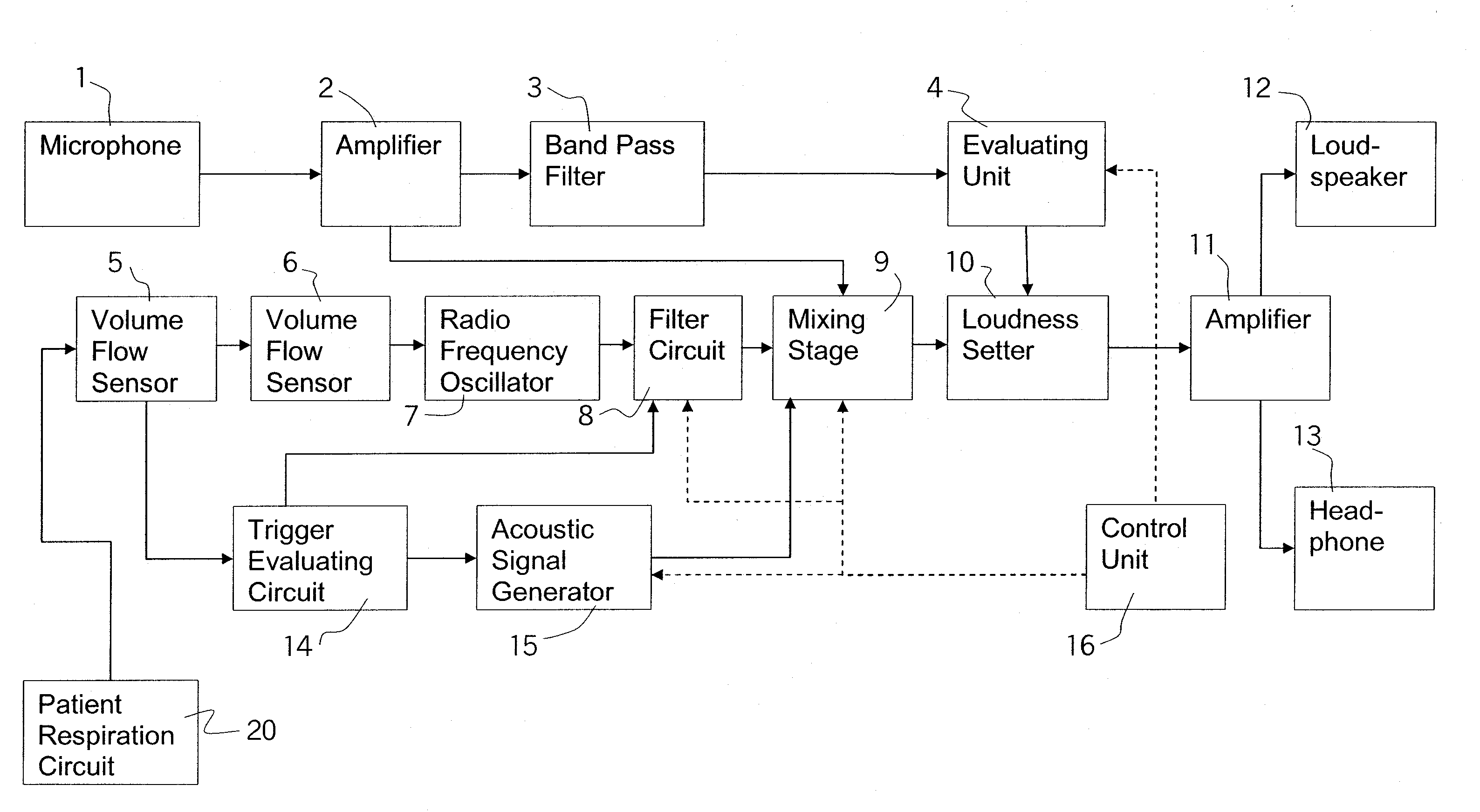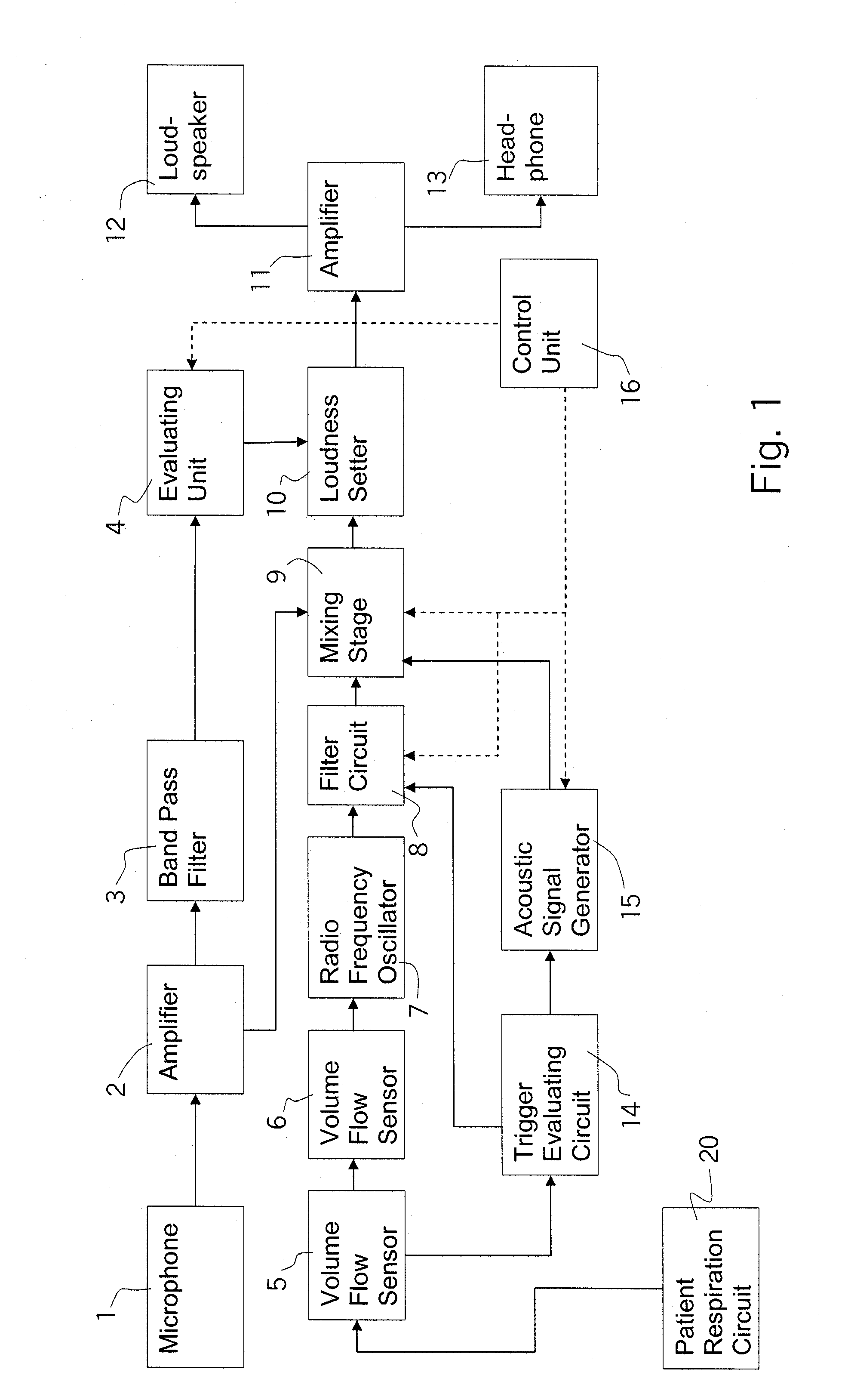Device for acoustically reproducing the respiratory function for a respirator
a technology of acoustically reproducing and respiratory function, which is applied in the field of acoustically reproducing the respiratory function of a respirator, can solve the problems of therapists not being able to continuously see this information, basic loudness must be set by users, and setting may subsequently prove to be too fain
- Summary
- Abstract
- Description
- Claims
- Application Information
AI Technical Summary
Benefits of technology
Problems solved by technology
Method used
Image
Examples
Embodiment Construction
[0018]Referring to the drawings in particular, the device shown in FIG. 1 has a volume flow sensor device 5, 6, for example, by means of pressure measurement at the patient respiration circuit 20 with subsequent evaluation, which determines the patient's volume flow in the respiration circuit and generates a corresponding control signal, which is sent to a noise generator 7, which generates, via a loudspeaker 12 and / or headphone 13, a stethoscope-like respiratory sound with a loudness that depends on the respiratory volume flow.
[0019]Furthermore, a microphone 1 is provided, which detects the ambient noise level. The ambient noise level is preferably evaluated in a limited frequency range only, which comes into consideration for typical areas of the environment. This frequency range may be, for example, between 500 Hz and 4,000 Hz. The microphone signal is sent to an evaluating unit 4 via an amplifier 2 and optionally a band pass filter 3. The microphone signal is averaged in the eva...
PUM
 Login to View More
Login to View More Abstract
Description
Claims
Application Information
 Login to View More
Login to View More - R&D
- Intellectual Property
- Life Sciences
- Materials
- Tech Scout
- Unparalleled Data Quality
- Higher Quality Content
- 60% Fewer Hallucinations
Browse by: Latest US Patents, China's latest patents, Technical Efficacy Thesaurus, Application Domain, Technology Topic, Popular Technical Reports.
© 2025 PatSnap. All rights reserved.Legal|Privacy policy|Modern Slavery Act Transparency Statement|Sitemap|About US| Contact US: help@patsnap.com


